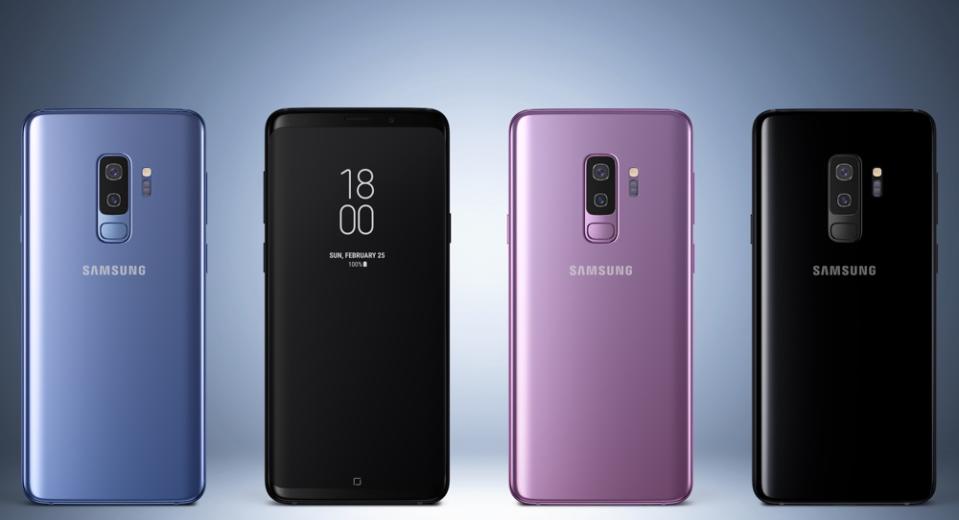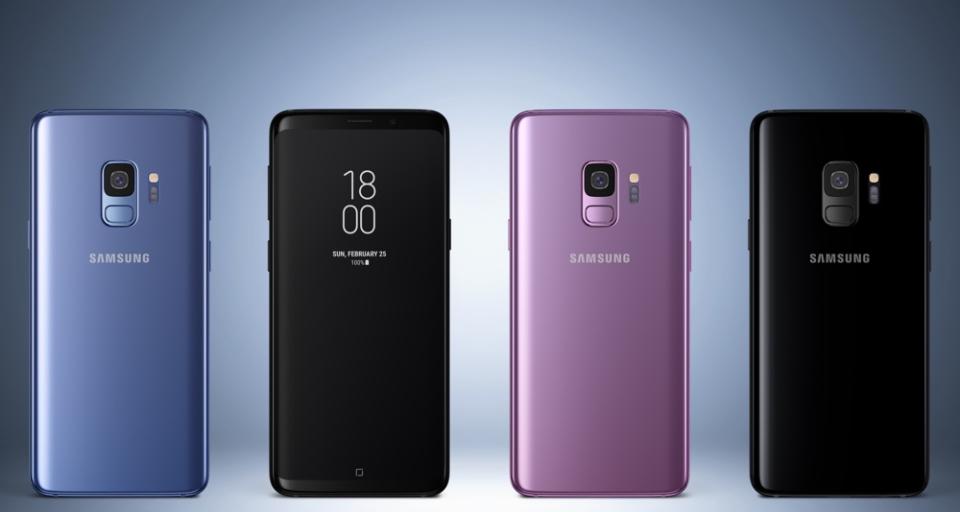Samsung's Galaxy S9 and S9 Plus bring major camera improvements
Samsung’s Galaxy S9 and S9 Plus are here. Sure, the leaks have ensured that we already know what the handsets look like, but there’s a big difference between seeing a photo of a smartphone and actually using it.
The S9 and S9 Plus are the big follow-ups to the S8 and S8 Plus, naturally, and face formidable competition in Apple’s (AAPL) iPhone 8, 8 Plus and X (pronounced 10). They’re strikingly familiar looking, but offer major improvements to one of the most essential components of a smartphone: their cameras.
More of the same, in a good way
Put the Galaxy S9 and Galaxy S8 next to each other and you’ll have a heck of a time trying to tell them apart. Samsung has kept the same design language from last year’s models, and that’s, well, not a bad move. After all, the S8 is a stunning device. What’s more, this isn’t as big of a release for Samsung as the completely redesigned iPhone X was for Apple, so there’s no particular impetus to make major changes.
Would I have liked a new design? Absolutely. It’s a disappointment that there isn’t much of a change here. But it’s not something that will hurt the S9 and S9 Plus’ eventual sales.

There are some minor changes to how the new handsets’ look, of course. Samsung said it made the S9’s and S9 Plus’ bezels a bit thinner than their predecessors and, by the grace of God, the company decided to move the fingerprint sensor away from the camera and down to the center of the phone’s rear.
This will make it far easier to use the reader without mistaking it for the camera. It also ensures you can reach the reader without having to stretch your finger across the phone’s back panel.
The S9 and S9 Plus, which are powered by Google’s (GOOG, GOOGL) Android OS, also get the same screen size as the S8 and S8 Plus. The S9 comes with a 5.8-inch Super AMOLED screen, while the S9 Plus gets a 6.2-inch Super AMOLED panel. Samsung says it made the S9’s and S9 Plus’ displays brighter than the S8’s and S8 Plus’, but I wasn’t able to test that on my own.
Lights, camera, emoji
Samsung’s biggest improvements to the Galaxy S9 and S9 Plus are the handsets’ cameras. Interestingly, Samsung chose to give the S9 Plus a dual-lens shooter, while leaving the S9 with a single lens. So far, it seems as though the additional lens will only be used for Bokeh-style photos, though.
Both the S9’s and S9 Plus’ cameras feature mechanical apertures that physically open and close depending on the type of lighting in which you’re shooting. Samsung says the cameras uses a mechanical dual aperture of F1.5 and F2.4. The company claims that this increases the amount of light the camera can capture by 28%.
In one demonstration a Samsung spokesperson pointed the camera into a cylinder that was almost completely dark. The camera, however, was able to use the minuscule amount of light inside to capture an image of the inside of the tube: an image of a roundabout.

The S9 and S9 Plus also get improvements to their low-light image clarity. Usually, when you take a picture in poor lighting the resulting image is noisy and distorted. Samsung says it addressed this by using what it calls multiframe noise reduction. The phones take three sets of four frames from your photos and then interpolate them to get a noticeably clearer image than those taken by Samsung’s previous generation phones.
An example the company showed us did, in fact, look clearer when taken with the S9, but I didn’t test the S8 and S9 side-by-side on my own, so I won’t make a call on whether it truly improves clarity until then.
Samsung is also touting the S9’s and S9 Plus’ slow-motion capture capabilities. The company said that its image sensors now have built-in memory that allows the camera to take video at 960 frames per second. The phones can manually or automatically activate slow-motion mode when they detect movement within the frame.
The feature works well in practice, but you have to line up the area of the screen where you think the movement will occur. What’s more, you can only shoot one 0.2-second clip at a time. That short amount of time stretches out to 6 seconds when played in slow motion, but I’d like to be able to record more action at a time.
Like Apple, and as predicted, Samsung has included augmented reality-style emojis to its latest smartphones. These AR Emojis capture an image of your face and then turn them into cartoon emojis that you can share with friends. Unfortunately, my emoji didn’t look anything like me at all. You can also transform your emoji to look like different animals like a rabbit, similar to Apple’s Animojis.
Unlike Apple’s Animojis, which move in near-perfect sync with your face, however, Samsung’s AR Emojis couldn’t quite match my facial movements. Of course, Samsung is constantly updating its software features — the company’s phones received an update while I was testing them — so this could change by the time the S9 and S9 Plus hit the market.

Both the S9 and S9 Plus also get a slick new live text translation feature and AR make-up testing through Sephora and CoverGirl. The translation function can look at printed or written text in 54 different languages and instantly overlay their English translations over the original text. It’s stunning to see in real-time and worked extremely well during my hands-on.
The make-up feature, meanwhile, lets you use the S9’s and S9 Plus’ front-facing cameras to let you virtually try out make-up and then purchase it directly from Sephora and CoverGirl. I’ve got to admit, I didn’t think it would be helpful, but now I’m certain I need some hot pink lipstick from Sephora.
Performance and power
Inside, the S9 and S9 Plus use Qualcomm’s (QCOM) Snapdragon 845 processor. Surprisingly, the S9 gets 4GB of RAM, while the S9 Plus gets 6GB of RAM. This is the first time Samsung gave one version of its Galaxy phones a leg up over the other. Both handsets, however, come with the same 64GB of internal memory and expandable storage slots.
In terms of battery life, the S9 comes with a 3,000-mAh battery, while the S9 Plus gets a 3,500-mAh battery. That makes sense, though, as the larger S9 Plus will run through power faster than the smaller S9.
And of course, Samsung has included a headphone jack with both the S9 and S9 Plus, ensuring that you can both charge your phone and listen to music at the same time with ease.
The S9 and S9 Plus will be available for pre-order on March 2 and in-store purchase March 16. An unlocked S9 will cost $719, or $30 per month with 24 months financing, while the S9 Plus will cost $839, or $35 per month with 24 months financing. Both phones will be available on all major wireless U.S. carriers. Stay tuned for my full review.
More from Dan:
Email Daniel Howley at dhowley@yahoo-inc.com; follow him on Twitter at @DanielHowley.
Follow Yahoo Finance on Facebook, Twitter, Instagram, and LinkedIn


